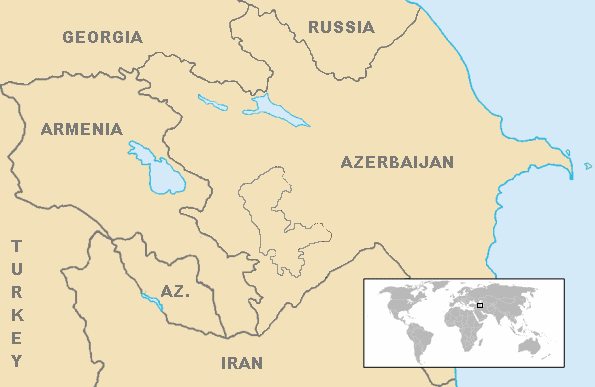There are indications the latest US-brokered ceasefire between Azerbaijan and Armenia is largely holding although both sides initially accused each other of violations just minutes after it came into effect on Monday.
"It’s holding. The ceasefire is holding. Okay?", U.S. President Donald Trump said after Air Force One Arrival at Lehigh Valley International Airport.
Armenian Prime Minister Nikol Pashinian on Monday appeared confirming the new truce "is generally being maintained".
“Despite several provocations, the ceasefire is generally being maintained. The Armenian side will continue to strictly adhere to the ceasefire regime,” Pashinian said in a Facebook post.
Azerbaijan's President Ilham Aliyev said in an address to the nation on October 26 that he instructed the army, "despite the other side's violations", "to show restraint" and "not succumb to provocations".
Azerbaijan's Defense Ministry said its forces have also complied with the truce although Armenian forces had “once again grossly violated” the cease-fire.
"Armenian armed forces, which did not comply with the humanitarian truce, repeatedly tried to attack the positions of the Azerbaijan army.... The Tartar city and the villages of the region are being fired again by the Armenian armed forces in gross violation of the new humanitarian ceasefire regime. .. Our troops are observing the new humanitarian ceasefire regime along the entire front," the ministry said.
On Sunday, Armenia and Azerbaijan agreed to honor a "humanitarian ceasefire" based on commitments made in Moscow earlier this month, according to a joint statement from the US State Department and the two governments.
The agreement was reached following intense negotiations, the US state department said, adding that the truce would come into force early on Monday.
Two previous ceasefires agreed earlier this month over the conflict were broken almost immediately.
Armenians took control of Nagorno-Karabakh and seven surrounding districts of Azerbaijan in a 1990s war amid the collapse of the Soviet Union. Fighting erupted on 27 September 2020. Azerbaijan President Ilham Aliyev, speaking earlier Sunday at a meeting of defense officials in Baku, said the international community “should put pressure on Armenia” to withdraw its troops from the occuiped territories for any ceasefire to yield results.
The new ceasefire has likely been achieved under the US pressure as President Trump has been seeking something quick and temporary to claim credit in the contentious reelection campaign against former Vice President Joe Biden.
Previous article on this topic: Why don’t Azerbaijan and Armenia actually want ill-timed ceasefire?

The area comprising of a region called Nagorno Karabakh of about 4,400 sq km (1,700 sq miles) and some surrounding areas of of about 8,004 sq km (3,090 sq miles) are internationally recognised as part of Azerbaijan but effectively controlled by Armenia after the 1990s war. The devastating war displaced an estimated one million people and killed about 30,000 in 1988-1994. So war is over these areas:
If you want to make sense of the war raging between Armenia and Azerbaijan, you can read the Azerbaijan & Armenia explainer: All you need to know [in layman’s terms].






